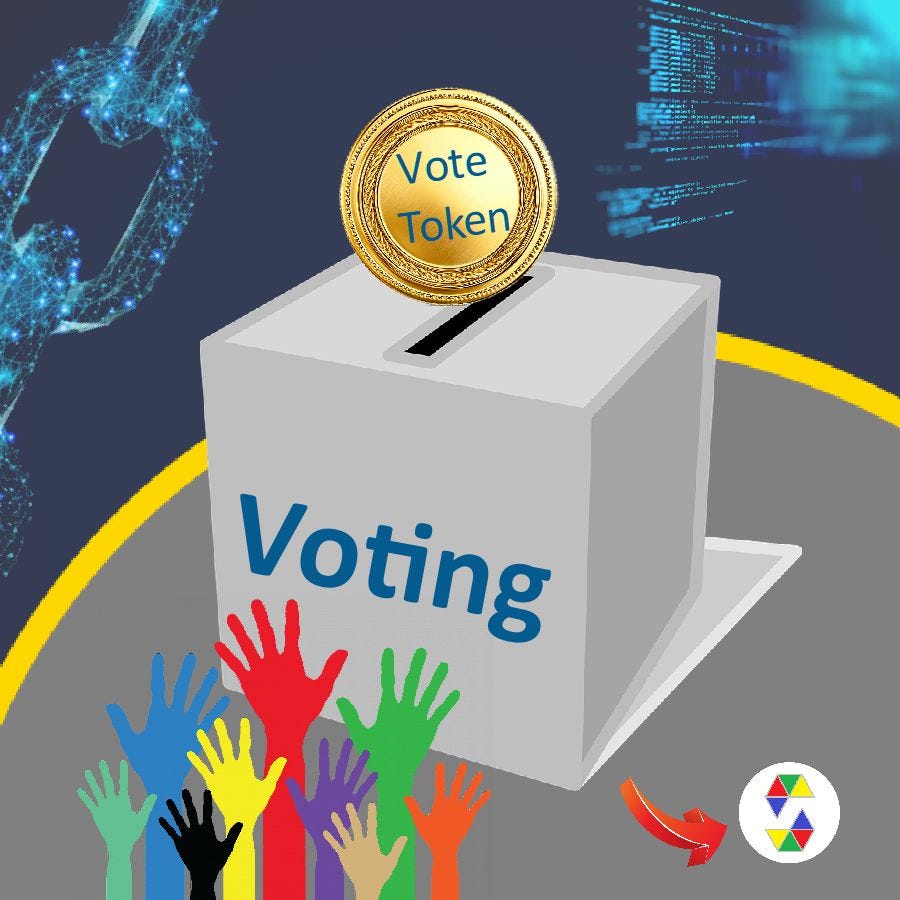Are you curious about the influence of economic incentives on Ethereum’s governance mechanisms? In this comprehensive article, we will explore how economic incentives shape the participation, decision-making, and overall effectiveness of Ethereum‘s governance. By understanding the impact of economic incentives, we can gain insights into the motivations of stakeholders, the dynamics of governance participation, and the alignment of interests within the Ethereum ecosystem.
Introduction: Economic Incentives and Governance in Ethereum
Ethereum’s governance is driven by economic incentives that motivate stakeholders to actively participate in decision-making processes. Economic incentives in the form of tokens, rewards, and staking mechanisms create a framework for aligning the interests of participants with the overall goals and success of the Ethereum ecosystem.
Understanding the impact of economic incentives on Ethereum’s governance is essential to comprehending the dynamics of decision-making, fostering community participation, and maintaining the sustainability of the network.
The Role of Economic Incentives in Governance Participation
Economic incentives play a pivotal role in encouraging active participation in Ethereum’s governance. Stakeholders, such as token holders, developers, and validators, are incentivized to engage in governance processes to safeguard their interests and maximize their returns.
By participating in governance, stakeholders have the opportunity to influence decision-making, shape the direction of protocol upgrades, and ensure the long-term viability of Ethereum. Economic incentives provide a mechanism for stakeholders to voice their opinions, exert influence, and contribute to the ecosystem’s success.
Token Voting and Governance Influence

Token voting is a prominent mechanism through which economic incentives impact Ethereum’s governance. Token holders can vote on proposals, upgrades, and changes to the protocol based on their stake in the network. The voting power is often proportional to the number of tokens held, giving larger stakeholders a greater say in decision-making.
Economic incentives drive token holders to actively participate in voting processes to protect their investments, influence the network’s direction, and increase their potential returns. Token voting ensures that decisions are made with consideration for the interests of the majority, as expressed through their economic stake in Ethereum.
Reward Structures and Staking Mechanisms
Reward structures and staking mechanisms are essential components of Ethereum’s economic incentives for governance participation. Validators and network participants are rewarded with tokens for securing the network, validating transactions, and participating in consensus mechanisms.
By offering economic rewards, Ethereum incentivizes validators and participants to uphold the network’s security and integrity. The prospect of earning rewards encourages individuals to contribute their computational resources, expertise, and time, reinforcing the overall governance mechanisms and ensuring the reliability of the network.
Economic Incentives for Protocol Upgrades
Economic incentives also play a vital role in facilitating protocol upgrades within Ethereum’s governance. Proposals for protocol changes often include incentives for developers and contributors who work on implementing and deploying upgrades.
By providing economic rewards for protocol upgrades, Ethereum encourages developers to contribute their skills and resources to enhance the ecosystem. These incentives stimulate innovation, attract talent, and ensure the continuous evolution and improvement of Ethereum’s underlying infrastructure.
Balancing Incentives and Long-Term Sustainability
Achieving a balance between short-term economic incentives and the long-term sustainability of Ethereum is crucial for governance mechanisms. While economic incentives drive participation and decision-making, it is essential to consider the overall health, security, and growth of the ecosystem.
Governance entities must design incentive structures that align with the network’s values, promote responsible decision-making, and prioritize the long-term interests of the community. Balancing incentives ensures that the governance mechanisms remain resilient, adaptable, and capable of sustaining Ethereum’s growth and development.
Case Studies: Successful Implementation of Economic Incentives in Ethereum Governance
Several case studies demonstrate successful implementation of economic incentives in Ethereum’s governance:
a. Ethereum 2.0 Beacon Chain Launch
The Ethereum 2.0 upgrade introduced economic incentives in the form of staking rewards for validators. By offering rewards to those who lock their tokens and participate in securing the network, Ethereum incentivizes stakeholder participation in the consensus mechanism, ensuring the smooth transition to a more scalable and sustainable blockchain infrastructure.
b. Decentralized Finance (DeFi) Governance Tokens
DeFi protocols built on Ethereum often introduce governance tokens that grant holders voting power and economic benefits. These tokens incentivize participation in governance processes, enabling token holders to shape the future of DeFi platforms and align their economic interests with the success of the protocols.
Challenges and Considerations in Economic Incentives for Governance
Implementing effective economic incentives for governance comes with its challenges and considerations:
a. Ensuring Inclusivity and Avoiding Centralization
Designing economic incentives that promote broad participation and avoid excessive centralization is a key challenge. Governance mechanisms must be accessible to stakeholders with varying levels of economic resources to maintain a diverse and inclusive ecosystem.
b. Mitigating Collusion and Manipulation Risks
Economic incentives can be susceptible to collusion or manipulation. Governance mechanisms should incorporate checks and balances to mitigate the risk of concentrated power and ensure that decisions reflect the collective interest of the community.
Decentralized Governance Token Distribution
The distribution of governance tokens in a decentralized manner is a crucial aspect of economic incentives in Ethereum’s governance. Ensuring a fair and broad token distribution encourages widespread participation and avoids excessive concentration of power.
Governance entities can implement mechanisms such as airdrops, token sales, or liquidity mining programs to distribute governance tokens to a diverse range of stakeholders. By enabling more individuals to hold governance tokens, economic incentives become more inclusive and reflective of the broader Ethereum community.
Synergy between Economic and Social Incentives
In addition to economic incentives, social incentives play a significant role in Ethereum’s governance. Social incentives encompass reputation, influence, and the desire for collaboration and recognition within the community.
Governance mechanisms can be designed to align economic incentives with social incentives, promoting cooperative behavior and encouraging stakeholders to act in the best interests of the ecosystem. By fostering a sense of community and shared values, economic incentives can reinforce social cohesion and strengthen the effectiveness of Ethereum’s governance.
Alignment of Economic Incentives with Network Security
Economic incentives in Ethereum’s governance are closely tied to the security of the network. Stakeholders who actively participate in governance and contribute to the network’s security are rewarded economically.
By aligning economic incentives with network security, Ethereum ensures that stakeholders have a vested interest in maintaining the integrity and robustness of the blockchain. This alignment strengthens the network’s security posture, as stakeholders are economically motivated to act in ways that protect the ecosystem from attacks or vulnerabilities.
Incentivizing Long-Term Participation and Engagement
Effective governance in Ethereum requires long-term participation and engagement from stakeholders. Economic incentives can be structured to reward sustained involvement and discourage short-term speculation or opportunistic behavior.
Governance mechanisms can include time-based incentives or rewards that accumulate over extended periods, encouraging stakeholders to remain actively engaged and invested in the success of the ecosystem. By incentivizing long-term commitment, Ethereum’s governance can foster stability, continuity, and responsible decision-making.
Economic Incentives for Ecosystem Development and Innovation
Economic incentives play a pivotal role in driving ecosystem development and innovation within Ethereum. By rewarding developers, entrepreneurs, and contributors for their contributions to the ecosystem’s growth, Ethereum’s governance stimulates innovation, attracts talent, and enhances the overall functionality and utility of the platform.
Governance entities can allocate funds or grants to support research, development, and community-driven initiatives. These economic incentives encourage experimentation, foster a vibrant ecosystem, and drive continuous improvement and expansion within Ethereum.
Economic Incentives for Protocol Standardization
Economic incentives can drive the standardization of protocols within Ethereum’s governance. By providing rewards or incentives for developers and projects that adopt common standards and interoperability, Ethereum encourages collaboration, reduces fragmentation, and promotes compatibility between different decentralized applications (DApps) and smart contracts.
Standardization simplifies the development process, enhances the user experience, and fosters a cohesive ecosystem where DApps can seamlessly interact with each other. Economic incentives play a crucial role in motivating developers to align their projects with widely accepted protocols, benefiting the entire Ethereum community.
Economic Incentives for Security Audits and Bug Bounties
To ensure the security and stability of Ethereum, economic incentives can be employed to incentivize security audits and bug bounty programs. By offering rewards to security researchers who identify and report vulnerabilities, Ethereum’s governance encourages continuous improvement in the system’s security measures.
Bug bounty programs incentivize the community to actively search for and disclose potential security vulnerabilities, enabling swift remediation and reducing the risk of exploits. Economic incentives for security audits and bug bounties create a collaborative environment, where stakeholders work together to enhance the security and resilience of Ethereum.
Economic Incentives for Governance Research and Development
Governance itself is an evolving field, and economic incentives can drive research and development efforts focused on improving governance mechanisms within Ethereum. By offering grants or funding opportunities, Ethereum’s governance incentivizes researchers, academics, and developers to explore innovative governance models, decision-making processes, and participation mechanisms.
These economic incentives foster a culture of experimentation, leading to the discovery of new approaches that enhance the effectiveness and inclusivity of Ethereum’s governance. By supporting governance research and development, Ethereum strengthens its governance mechanisms and positions itself at the forefront of decentralized decision-making.
Conclusion
Economic incentives play a significant role in driving participation, decision-making, and the overall effectiveness of Ethereum’s governance mechanisms. Through token voting, reward structures, and economic incentives for protocol upgrades, stakeholders are motivated to actively contribute to the success and sustainability of the Ethereum ecosystem.
By striking a balance between short-term incentives and long-term sustainability, Ethereum’s governance can foster inclusive participation, mitigate risks of centralization, and align the interests of stakeholders with the collective goals of the network.




